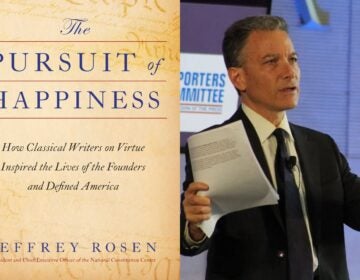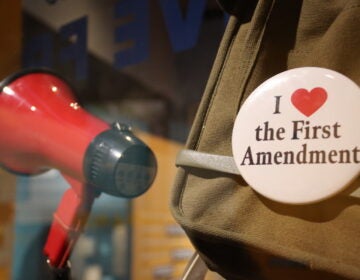Performing the Reconstruction Era (in its own words) in ‘FOURTEEN’ at National Constitution Center
The National Constitution Center’s Civil War and Reconstruction exhibition is accompanied by a play adapted entirely from historic texts.
Listen 2:09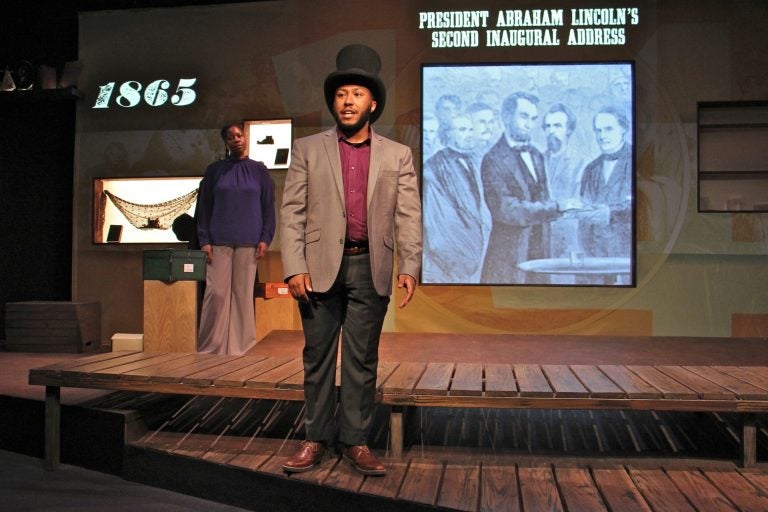
Ebony Pullum and Nathan Alford-Tate perform 'FOURTEEN' at the National Constitution Center. (Emma Lee/WHYY)
For most kids studying history in public school, the Reconstruction Era after the Civil War is skipped over.
“These rich stories of incredible progress in terms of representation in government — I know I wasn’t taught it, and I went to Philadelphia schools,” said Nora Quinn, director of theatre programs at the National Constitution Center in Philadelphia.
“Typically the war ends and then suddenly we have the 13th Amendment, then the 14th Amendment, then the 15th Amendment,” she said. “Many people don’t discern between the three what rights each of them grants. Most people assume they happened: boom, boom, boom.”
Those amendments abolished slavery, guaranteed a right to citizenship, and guaranteed a right to vote, in that order.
Quinn produced “FOURTEEN,” a play at the National Constitution Center complementing its current exhibition about Reconstruction. It’s a short play, just 30 minutes, and Quinn insisted at the outset that the script could only utilize pre-existing historic text. No lines were invented for this performance.
It features an excerpt of a speech by Andrew Johnson, who opposed the 14th Amendment granting citizenship to freed African-Americans. In 1864, just before he became the 17th president of the United States, he asserted, “This is a white man’s government.” A racist cartoon of the time illustrates this notion.
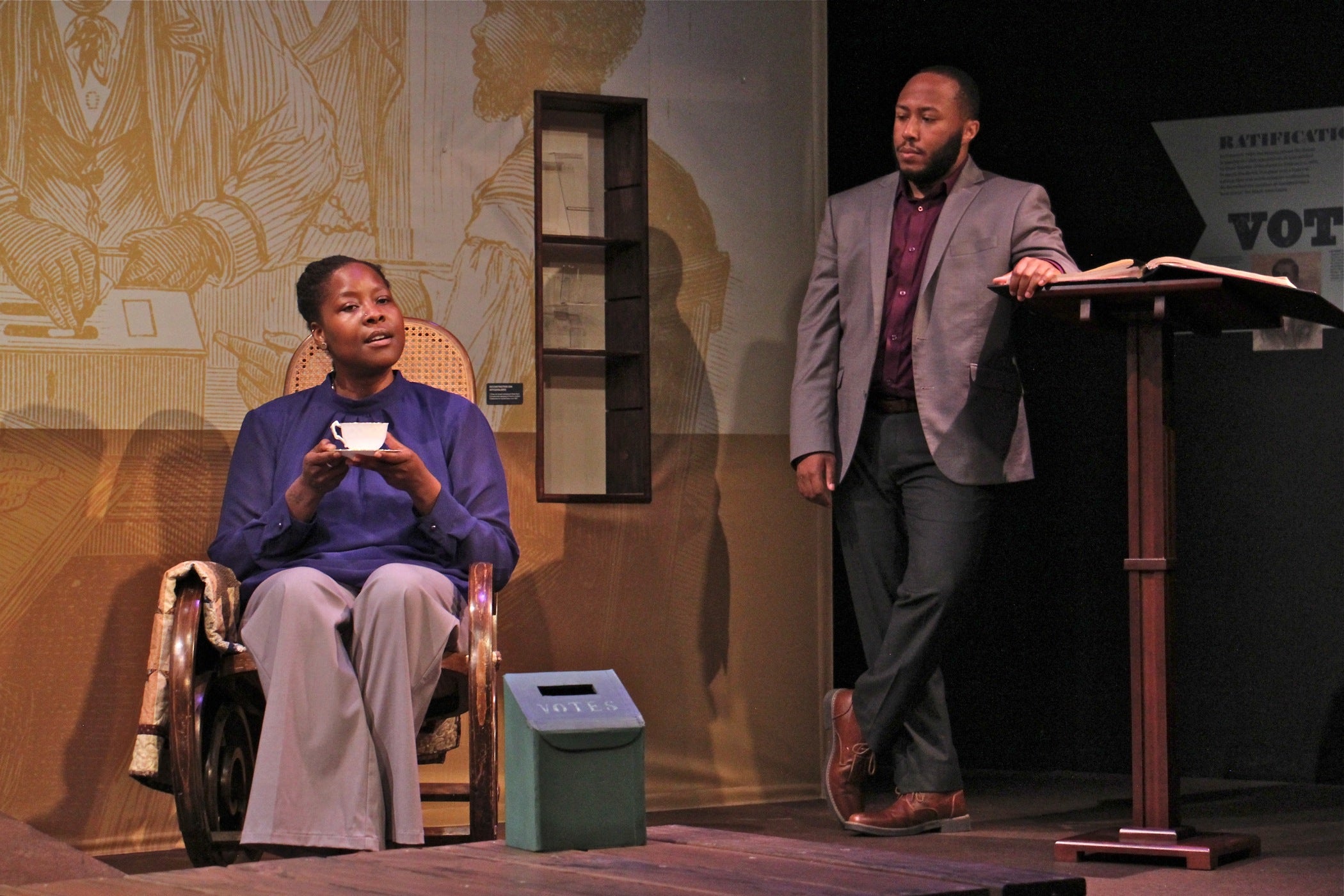
Following the Civil War, several Southern states passed “Black Codes,” a series of laws that restricted freedoms of African Americans, including their ability to travel and congregate.
In 1865, a convention of 52 African American delegates met in South Carolina to push back against Black Codes.
“We are by the present laws not only denied the right of citizenship, the inestimable right of voting,” they wrote. “We simply desire that the same laws that govern white men shall direct black men.”
There are dozens of quotes from letters, legal documents, and speeches of that era. These texts are treated as historic objects: held aloft, highlighted, put into context, and protected to museum standards.
The stage is constructed with a backdrop of empty niches; over the course of the play the performers set those niches with replicas of historic objects — a shoe, a scarf, a tintype photograph. As the actors recite the lines, they place the corresponding object into its presentation spot.
Some of the props are replicas of historic objects on display in the National Constitution Center’s Reconstruction exhibition.
“How do you make a living exhibit? How do you take the exhibit and tell all the stories?” asked Quinn. “What happens from the box in your aunt’s attic that holds something from your great-great-grandparents, to being in a museum case? What’s that journey?”
In the summer of 1864, Annie Davis, an African American living in slavery in Belfair, Maryland, wrote a short letter to President Abraham Lincoln. This was a year and half after Lincoln had issued the Emancipation Proclamation. It was Davis’ understanding that the Proclamation had freed the slaves, and she wanted to be able to visit family out of state.
“It is my desire to be free, to go see my people on the Eastern Shore,” wrote Davis. “My mistress won’t let me go. You will please let me know if we are free? I write to you for advice.”
There is no record that Lincoln responded to Davis, who, in fact, was not free. The President’s Emancipation Proclamation only applied to Southern states rebelling against the Union. Maryland was a border state, not in opposition to the Union, where slavery was legal.
Thusly, Davis’ letter is added to the play’s historiography.
“That individual voice tells a story about the limited power and limited intention of the Emancipation Proclamation,” said director Suli Holum. “It’s a three-line letter. But it unlocked a whole part of the story that I had certainly never been aware of before.”
To devise “FOURTEEN,” the National Constitution Center assembled a creative team that is a who’s-who of regional theater, with several Tony, Obie, and Barrymore awards among them, then hamstrung them with the requirement that they cannot create an original script.
Holum, who was one of the original members of the revered Pig Iron Theater Company, welcomes the play’s “exceptional restraint.” It forces a closer examination of a period of history that is largely untaught.
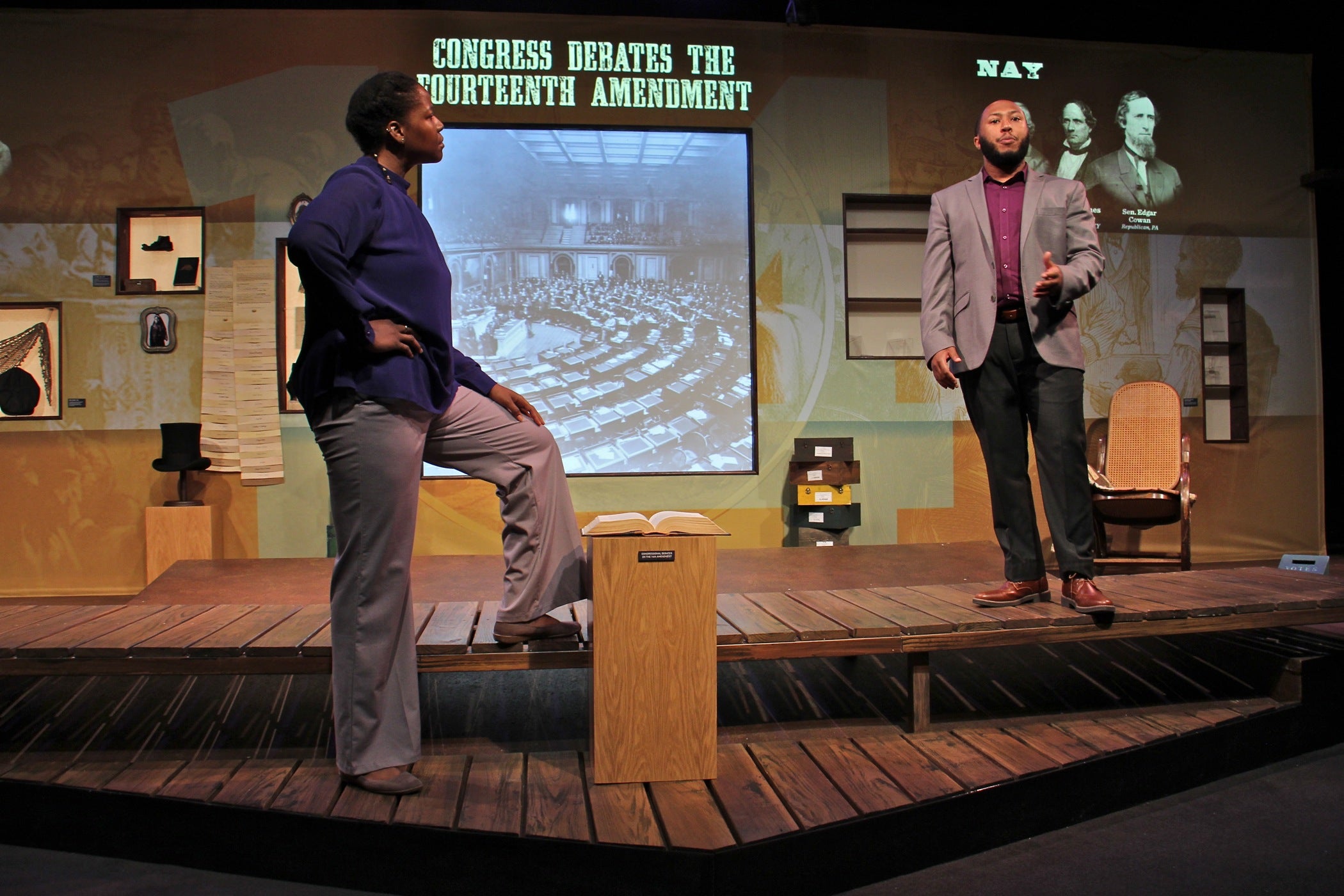
“It reveals a lot of the ugliest strains of the American project,” she said. “It also reveals, I think, some of the most beautiful and inspiring strains about what America is and can be.”
The play ends with an excerpt of a speech given in Philadelphia in April, 1875, at a meeting of the Pennsylvania Society for Promoting the Abolition of Slavery. It was delivered by Frances Ellen Watkins Harper, an African American poet and abolitionist.
“What we need in the onward march of humanity is a public sentiment in favor of common justice and simple mercy,” she said. “Inviting you to this work I do not promise you fair sailing and unclouded skies… Let no misfortunes crush you, no hostility of enemies of failure of friends discourage you.”
“FOURTEEN” will be performed four times a day, five days a week, until August 10. Quinn said it will likely return in the fall and spring, with some variations.
WHYY is your source for fact-based, in-depth journalism and information. As a nonprofit organization, we rely on financial support from readers like you. Please give today.



